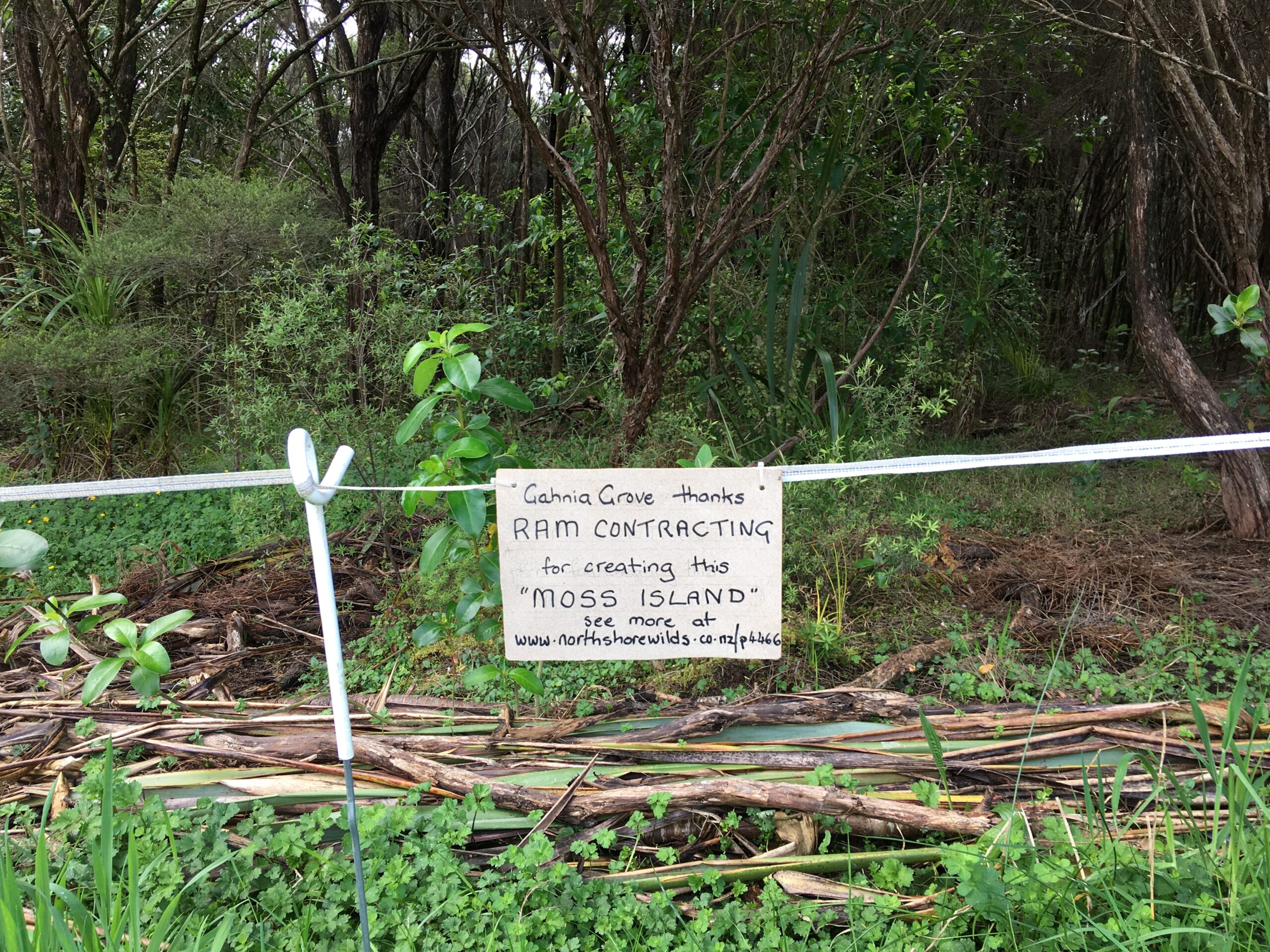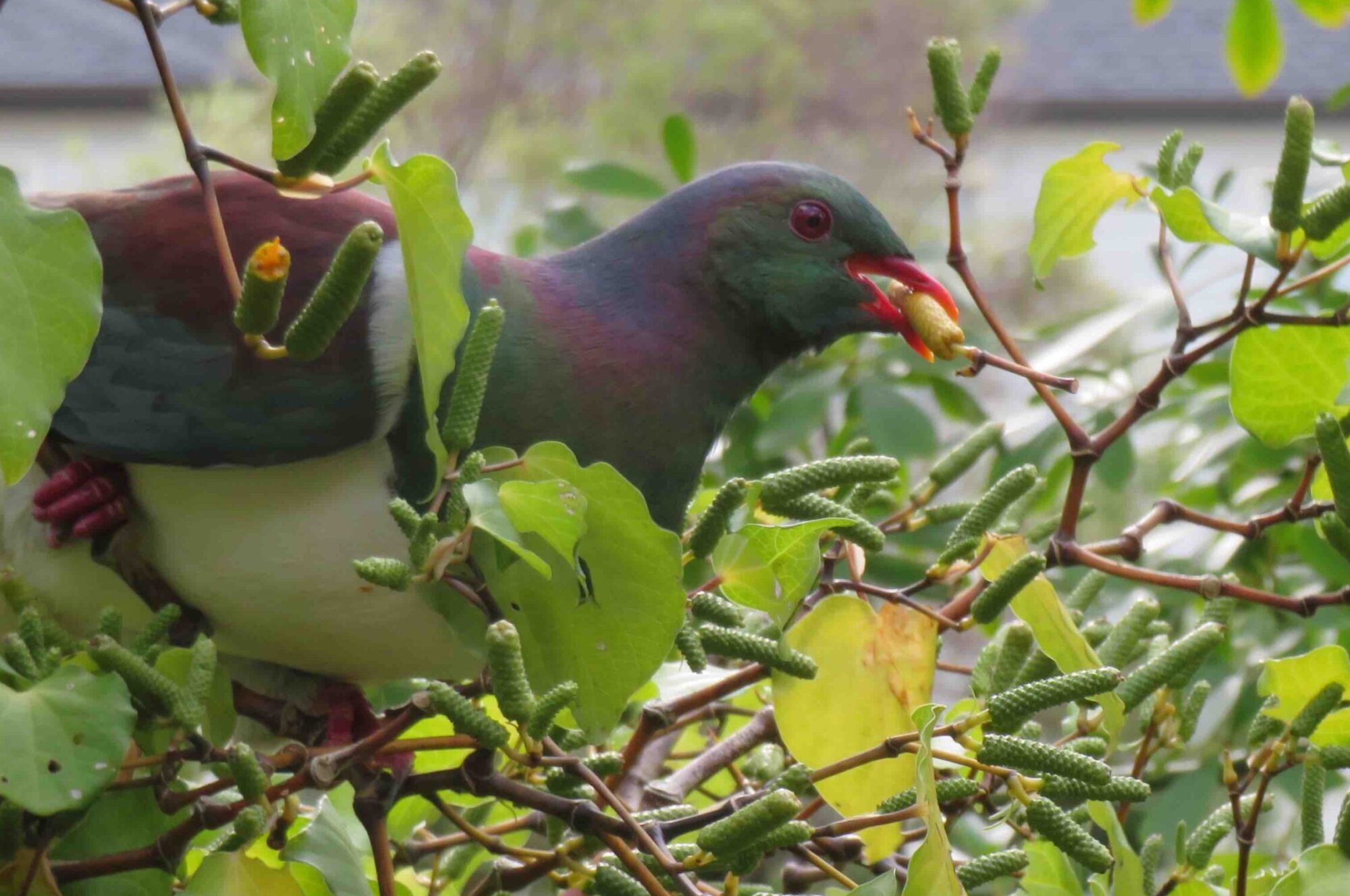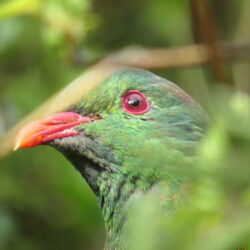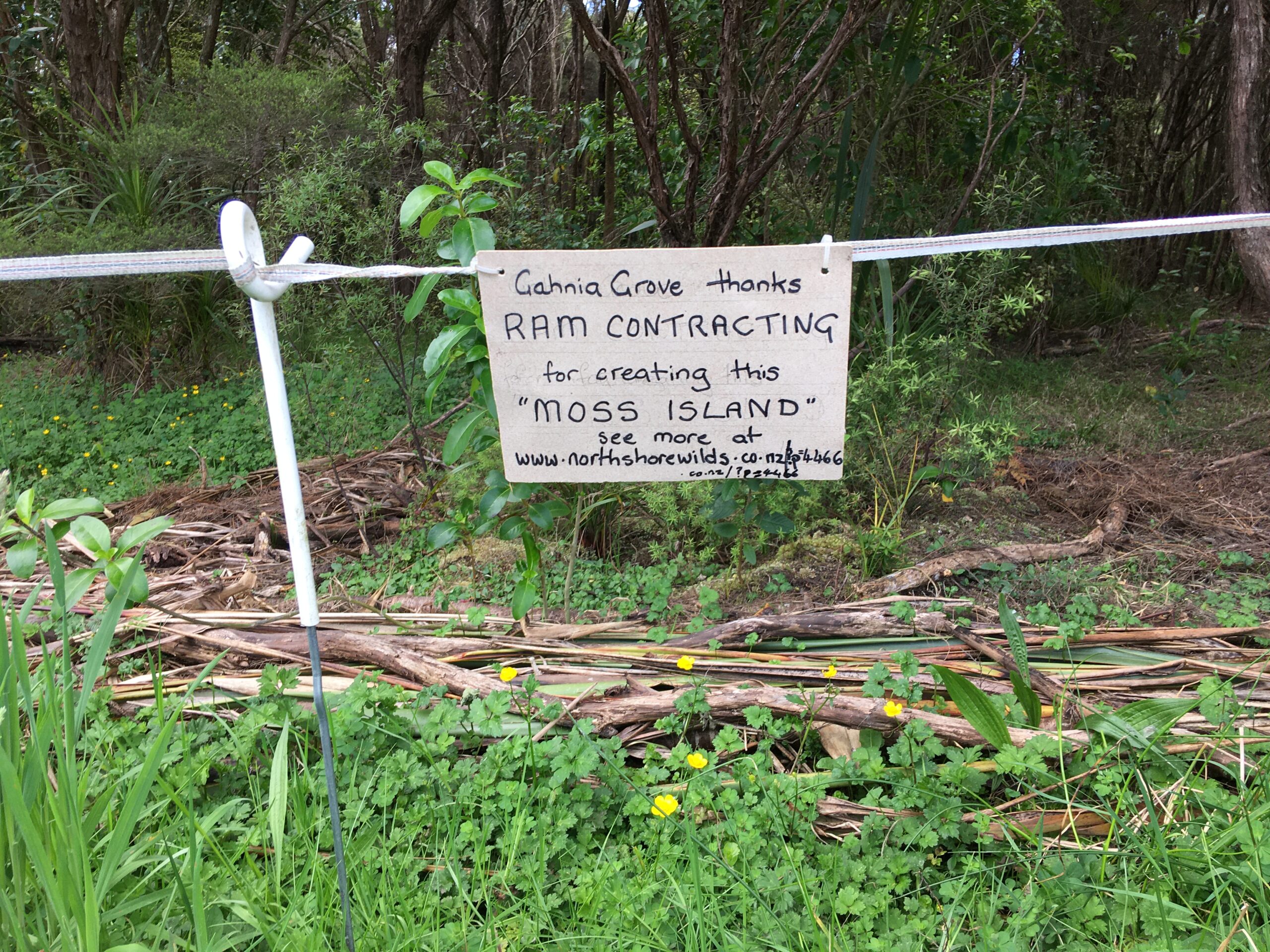
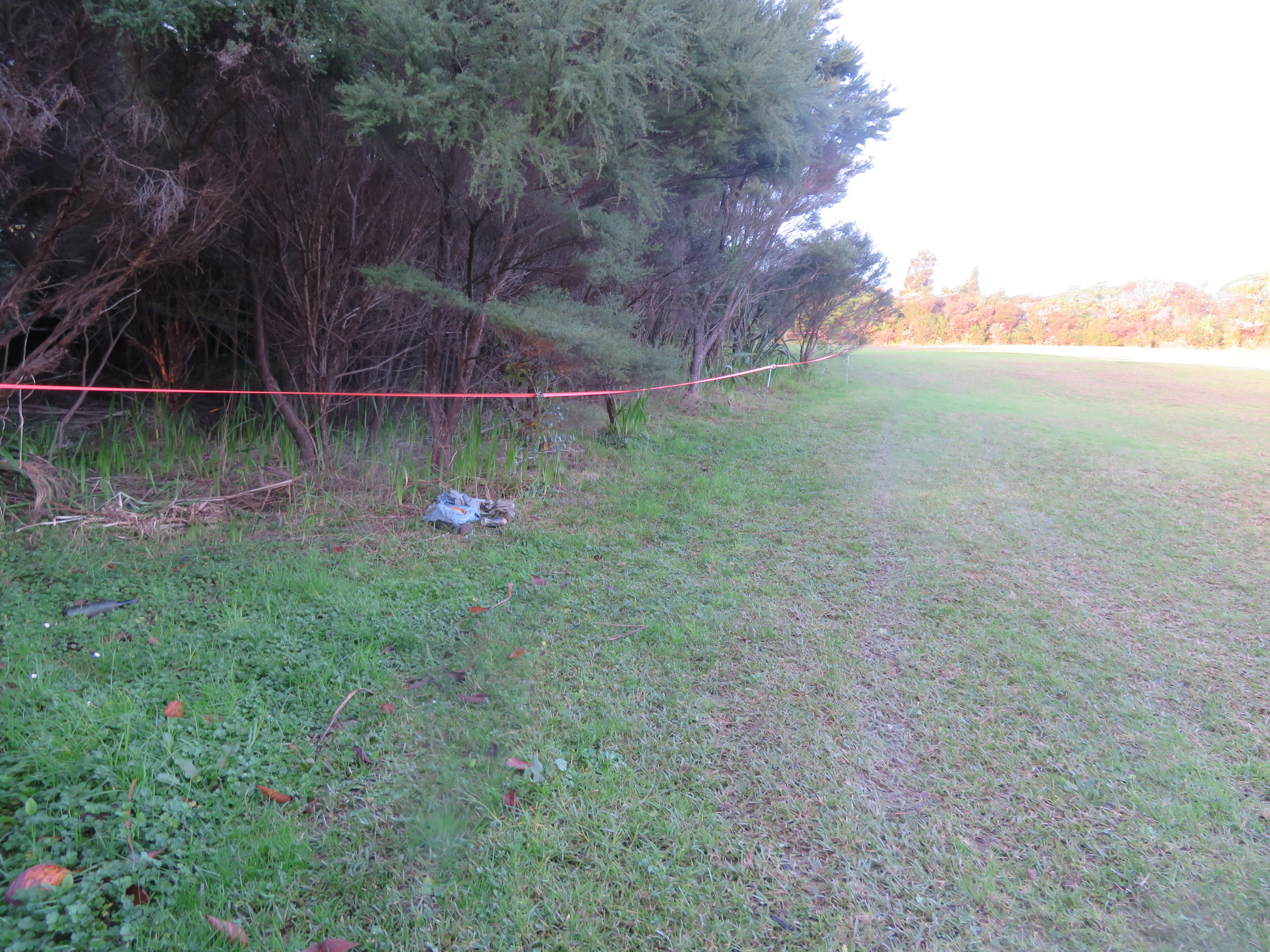
The weedy grass area on the left was later cordoned to become part of “Cherry Bay”, and in late 2020 Moss island was created there.
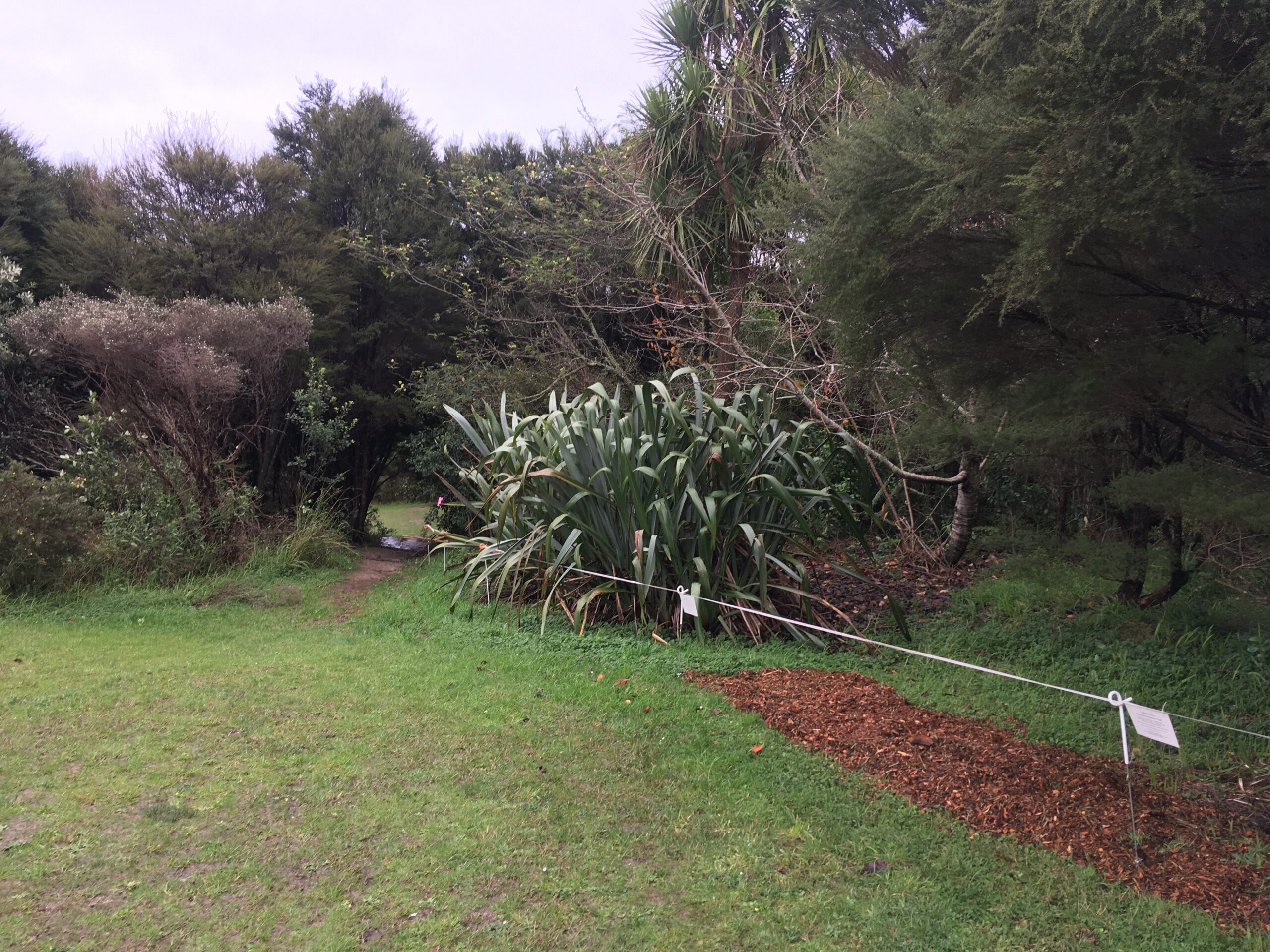
Cherry Bay is the whole area behind the cordon on the right, visible from the lower right-hand corner of the upper field of Eskdale Reserve in Glenfield Rd
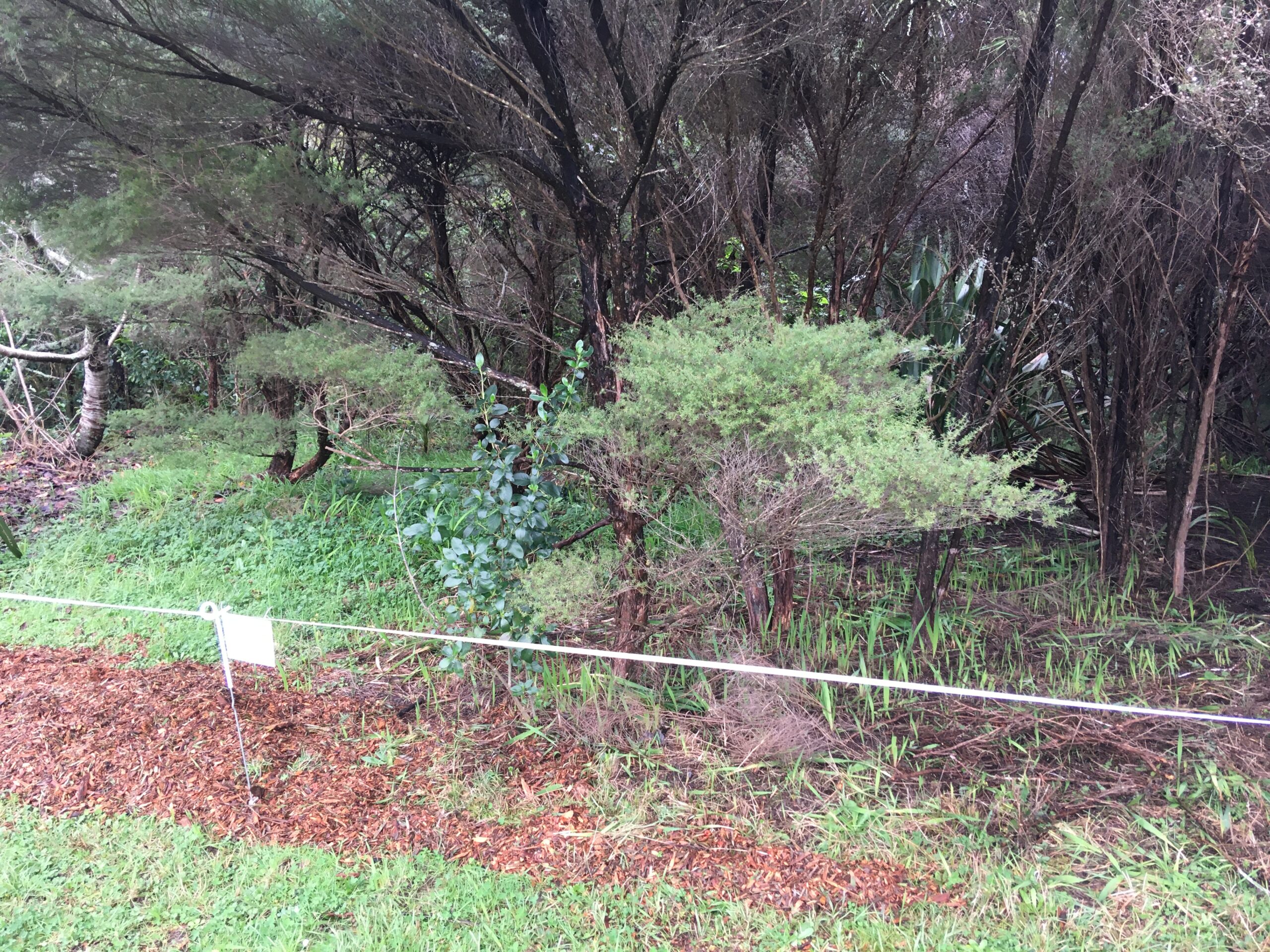
In 2020 during Auckland Council’s construction of a new forest track for cyclists and pedestrians, we asked their contractor RAM Contracting if they could save a little of the beautiful moss-covered clay bank which had to be excavated to widen, pave and channel the track for its new use.

The RAM Contracting team kindly agreed, and brought a digger load of large clay pieces out of the forest to the edge of the playing field below Glenfield Rd.
At our request they placed the pieces together in “Cherry Bay”, a damp weed-grass covered area just behind the Gahnia Grove cordon (see photos at top of page), where we could weed around it a few times a year while observing what happened to its covering of native mosses and gum-lands tree and shrub seedlings.
Below, some close-ups of Moss Island in March 2021.
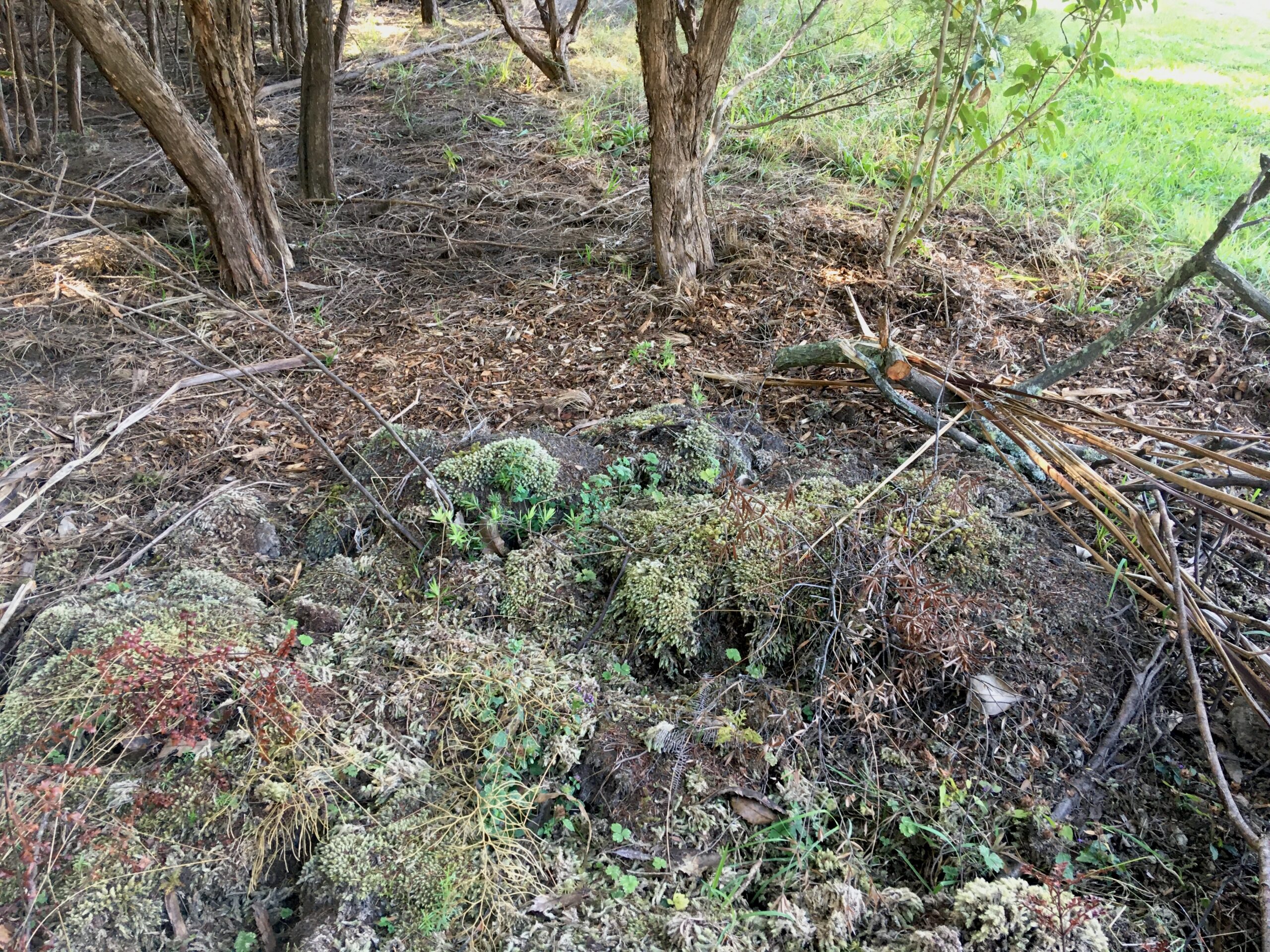
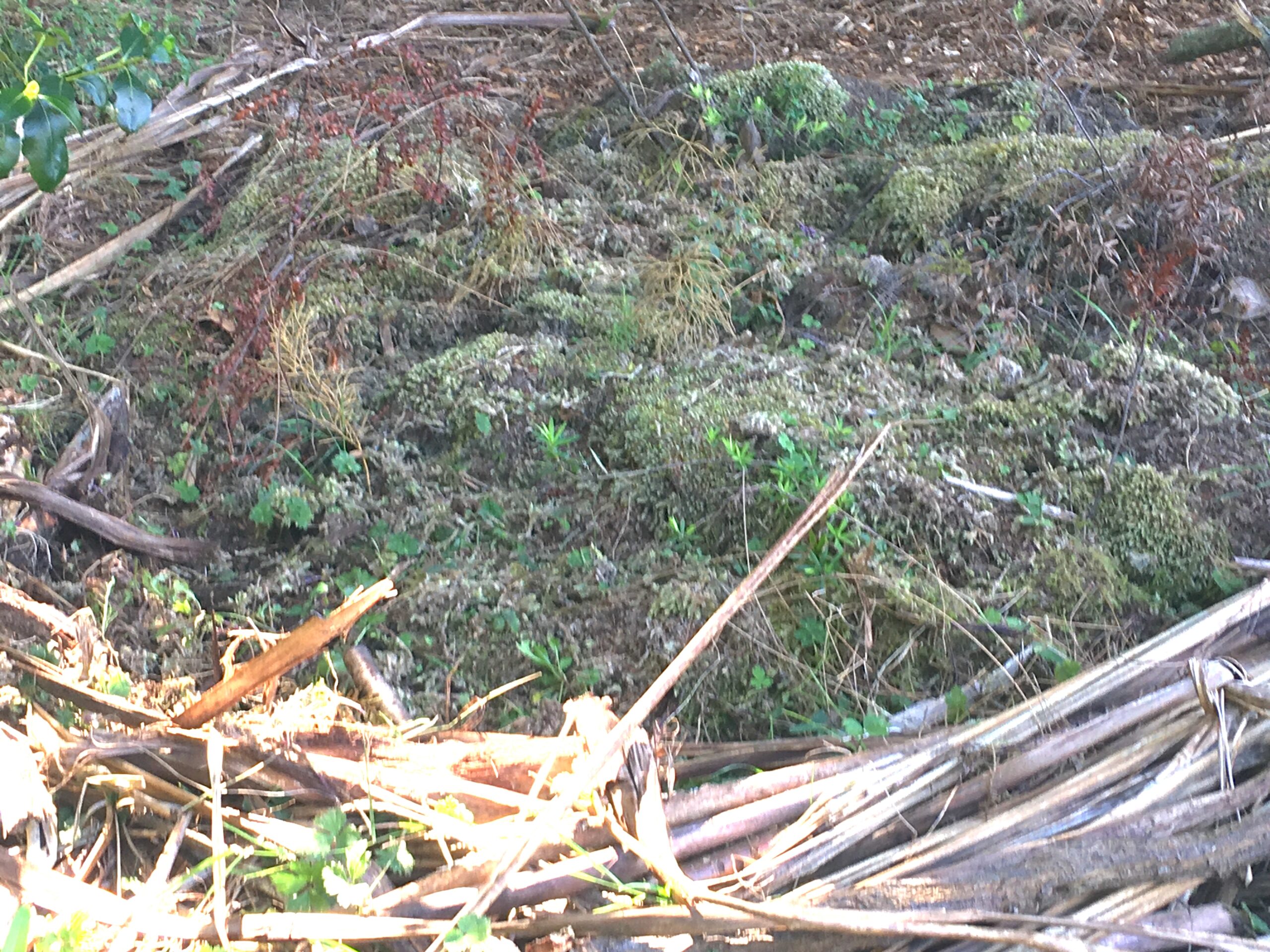
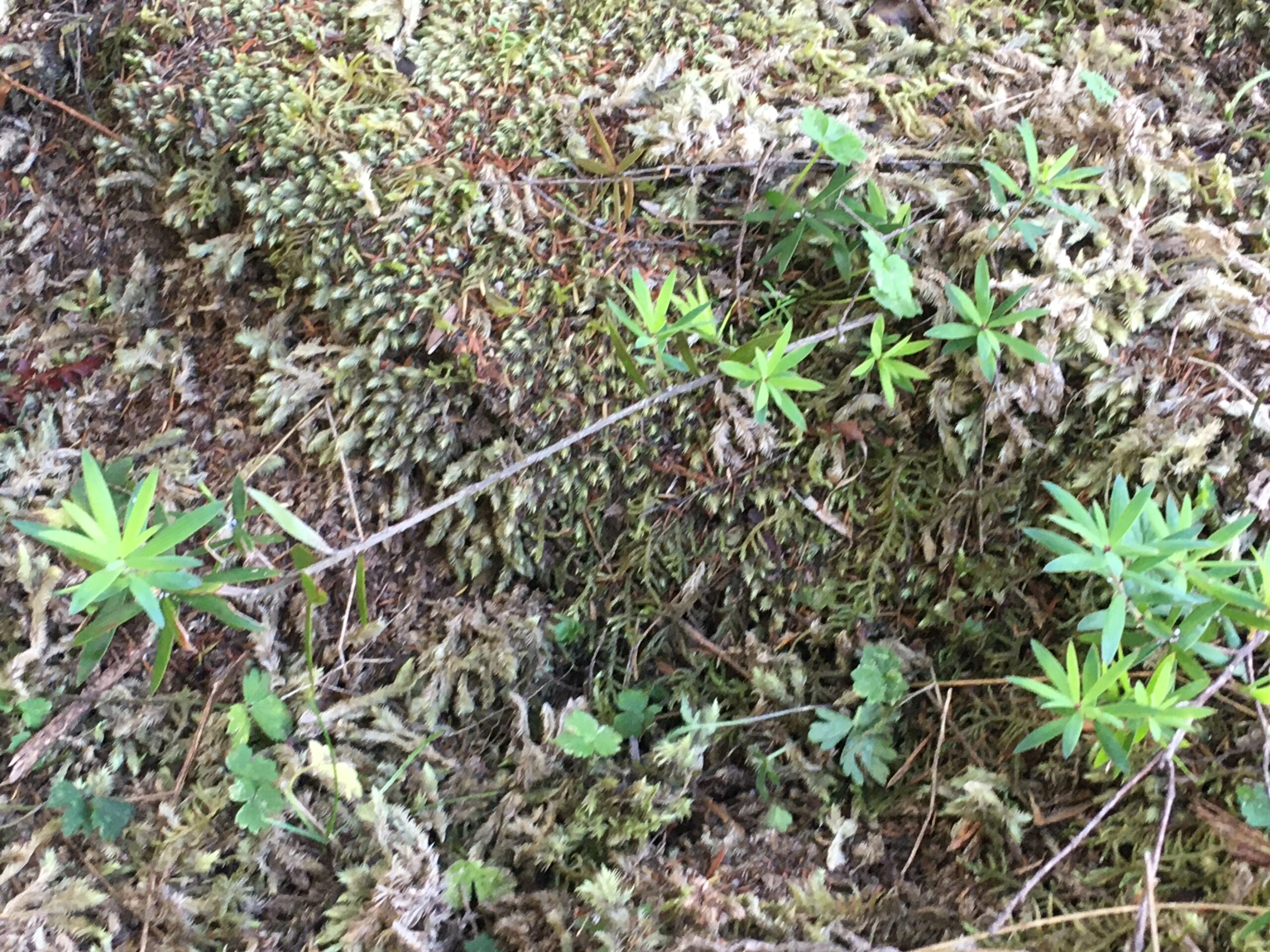
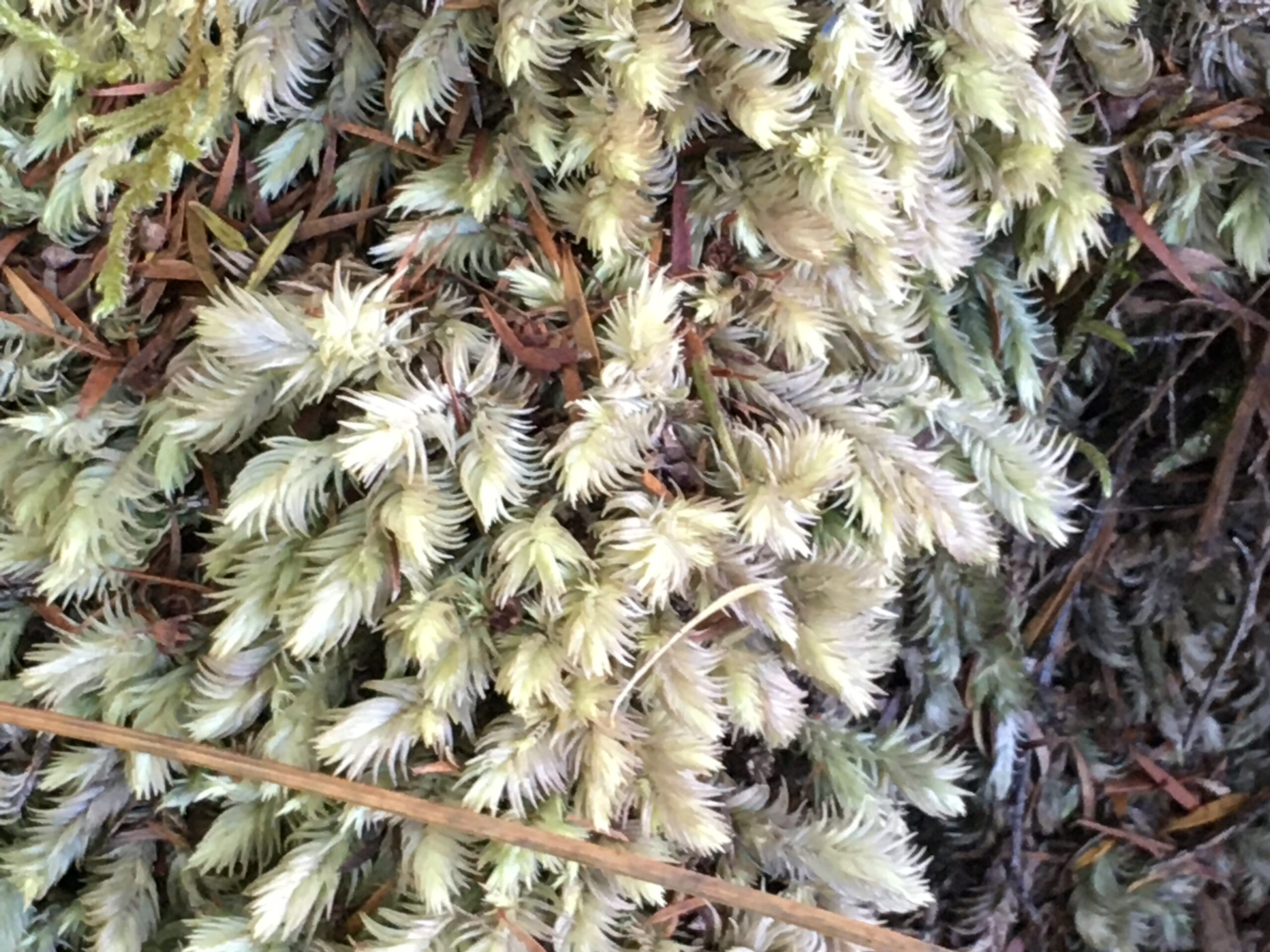
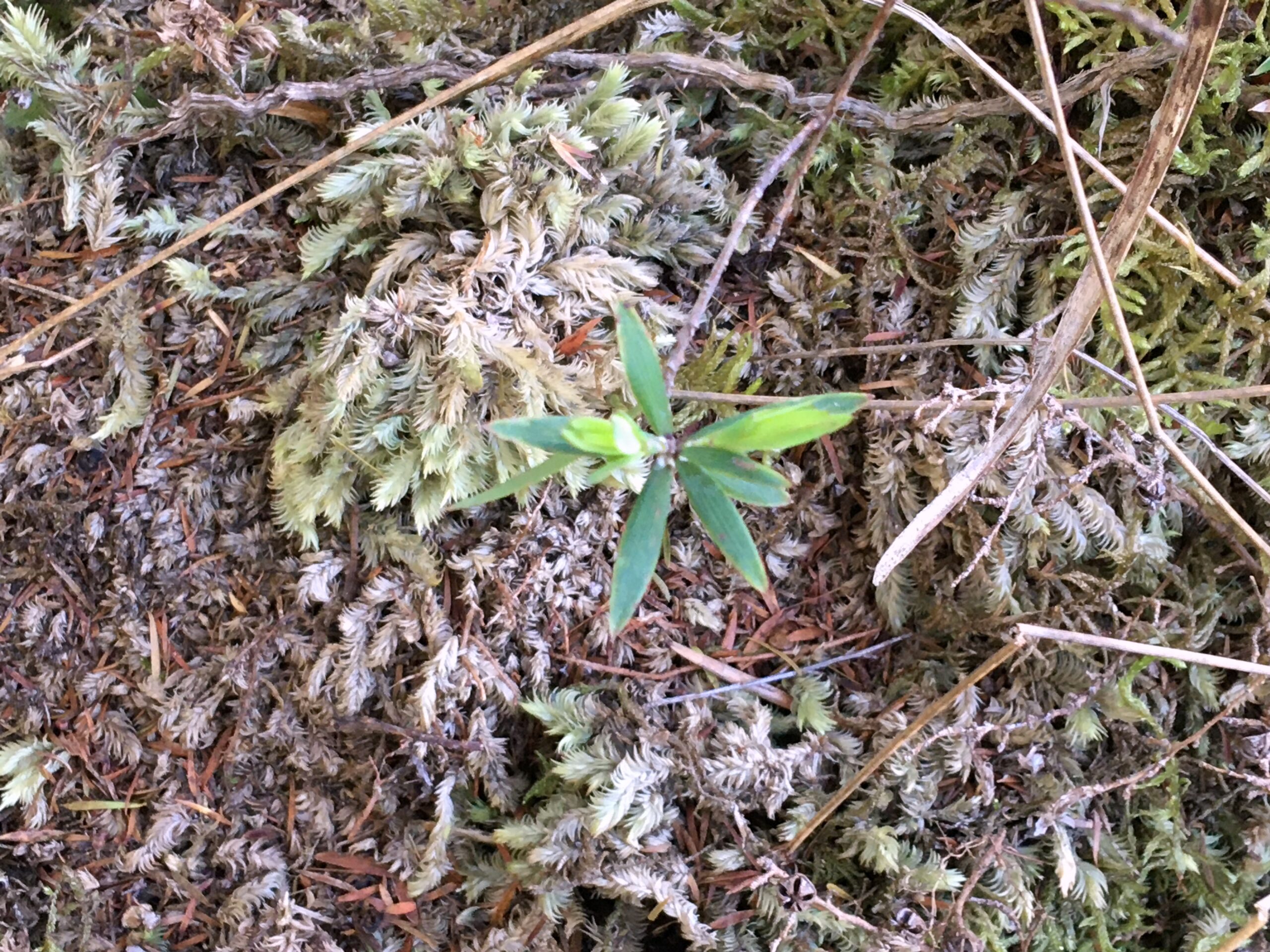
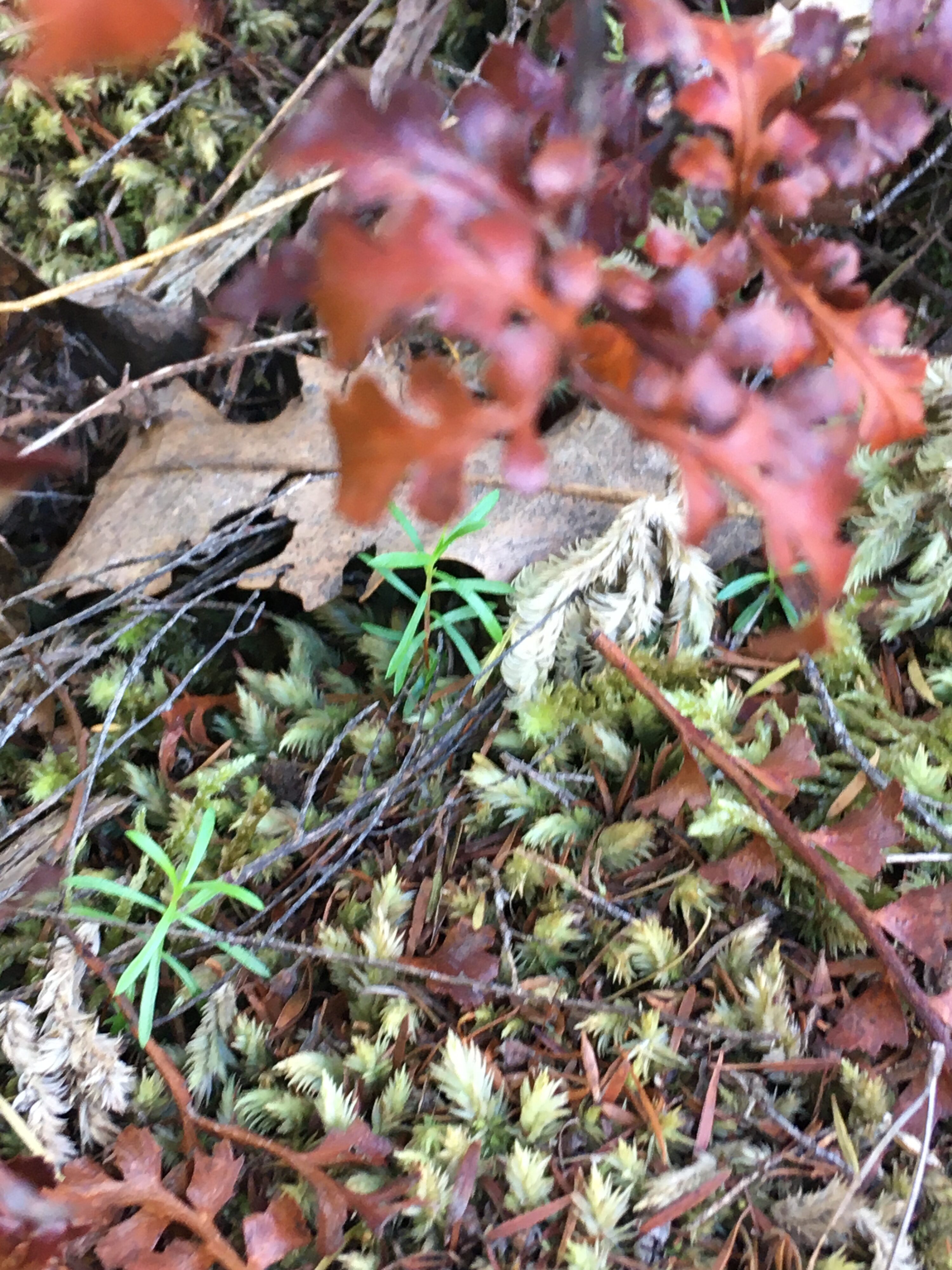

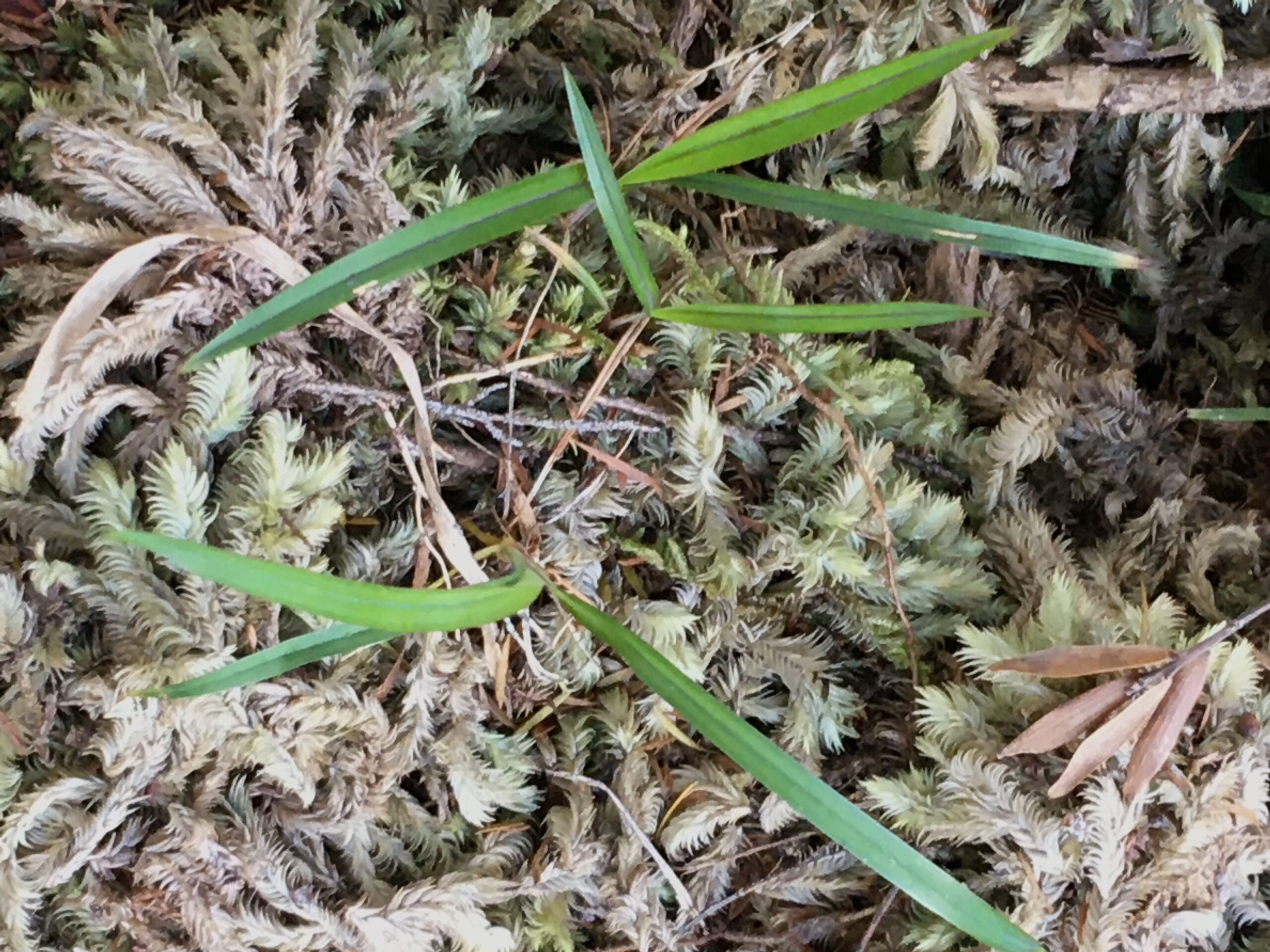
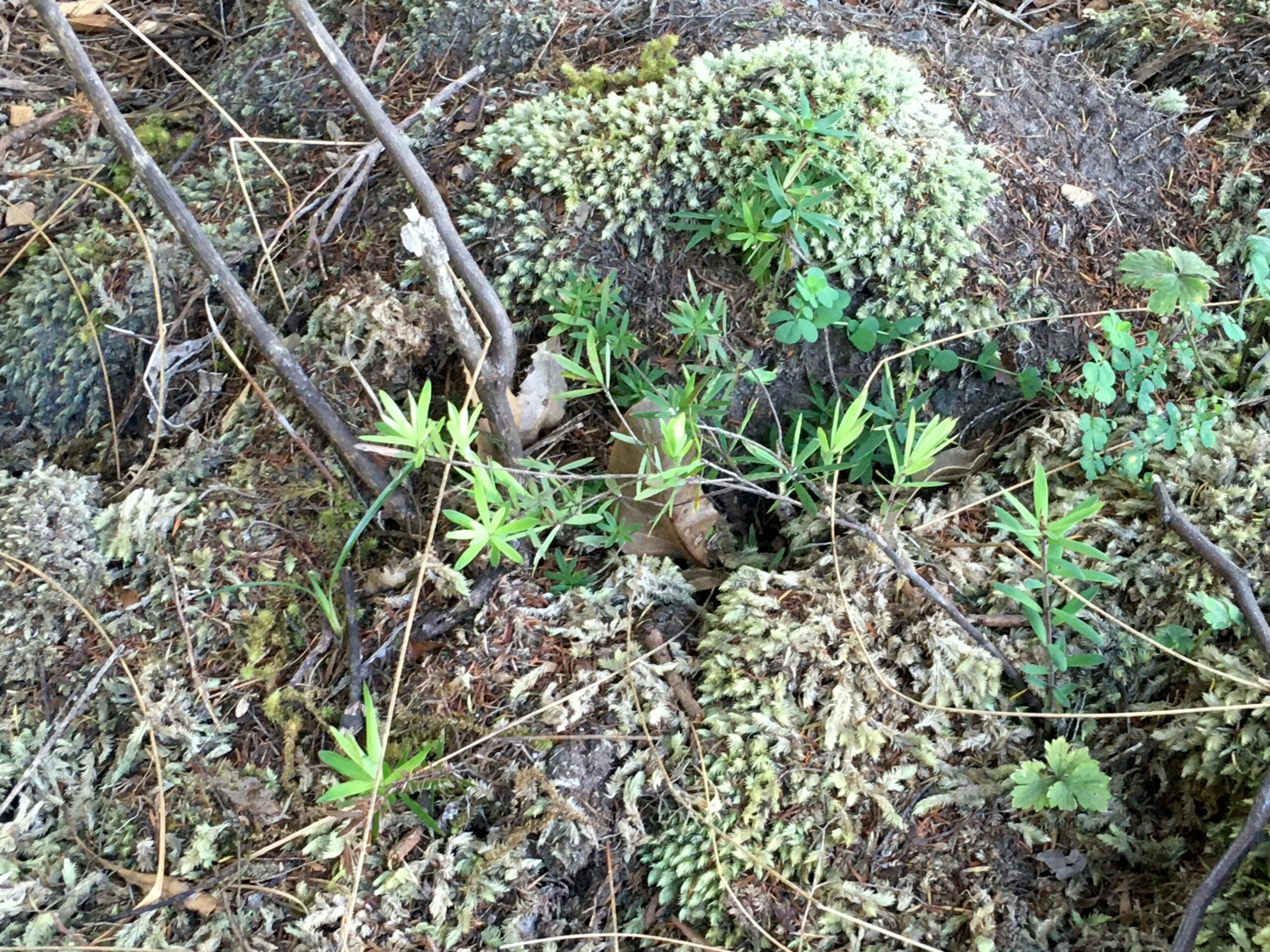
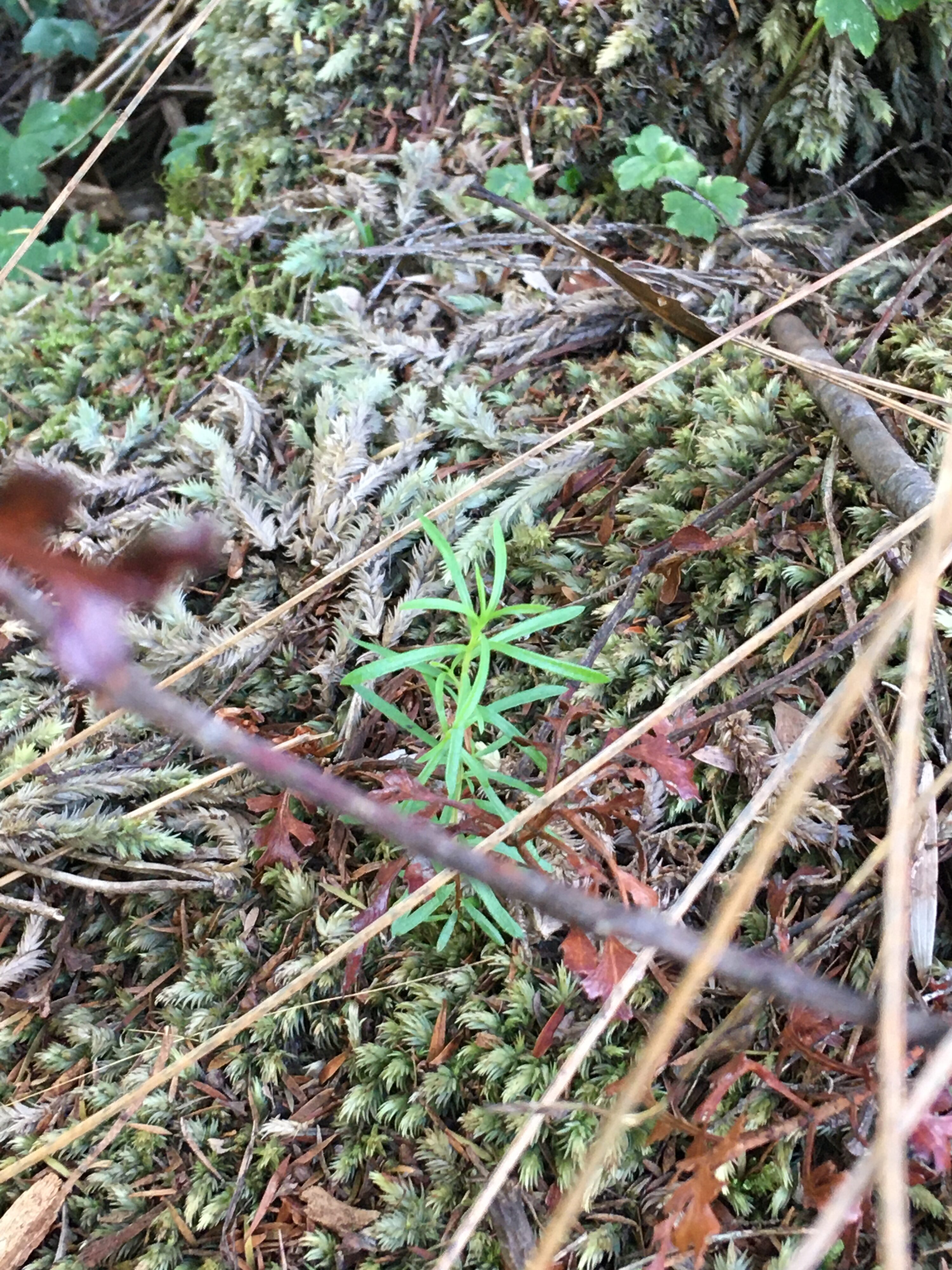
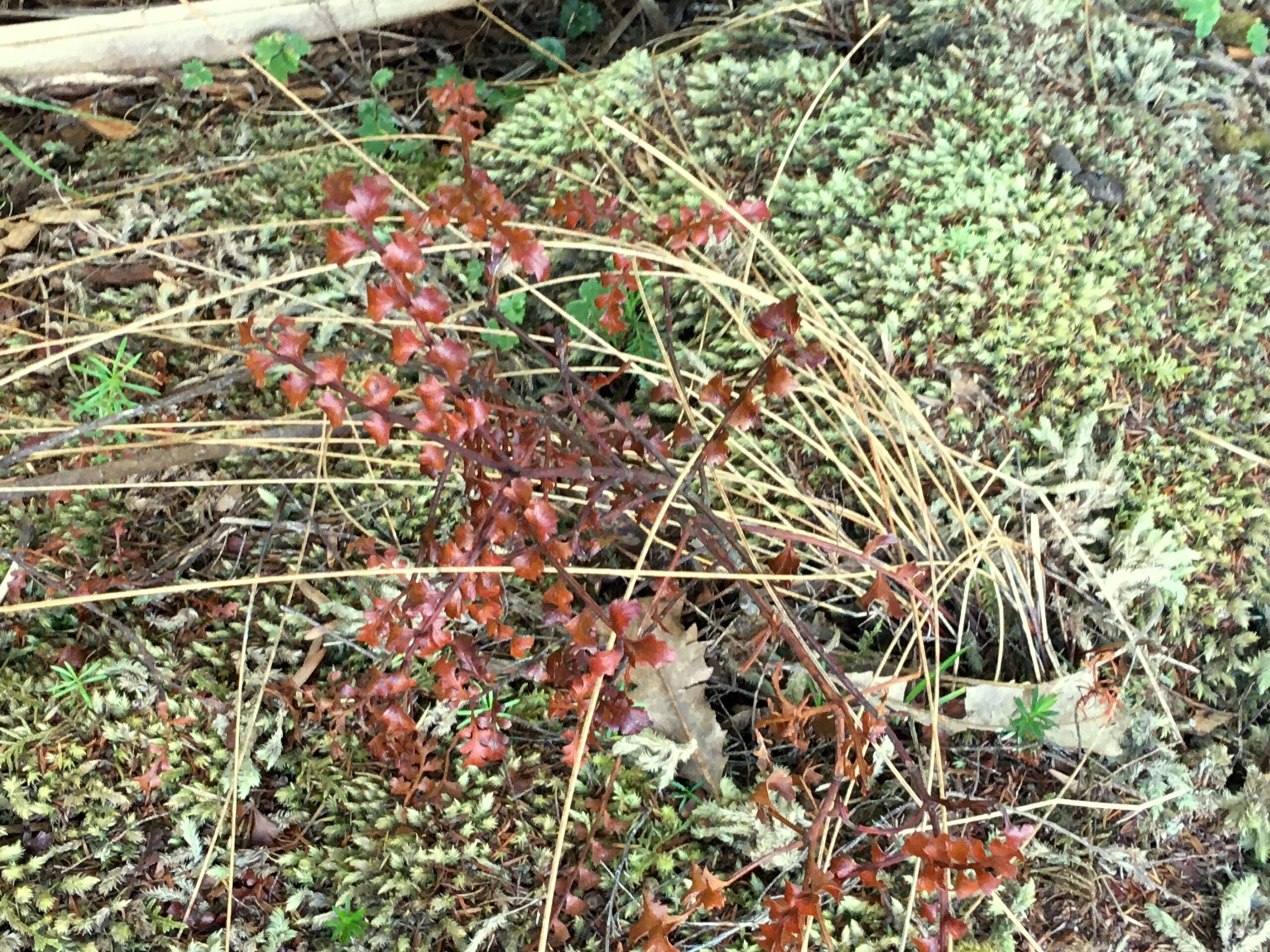
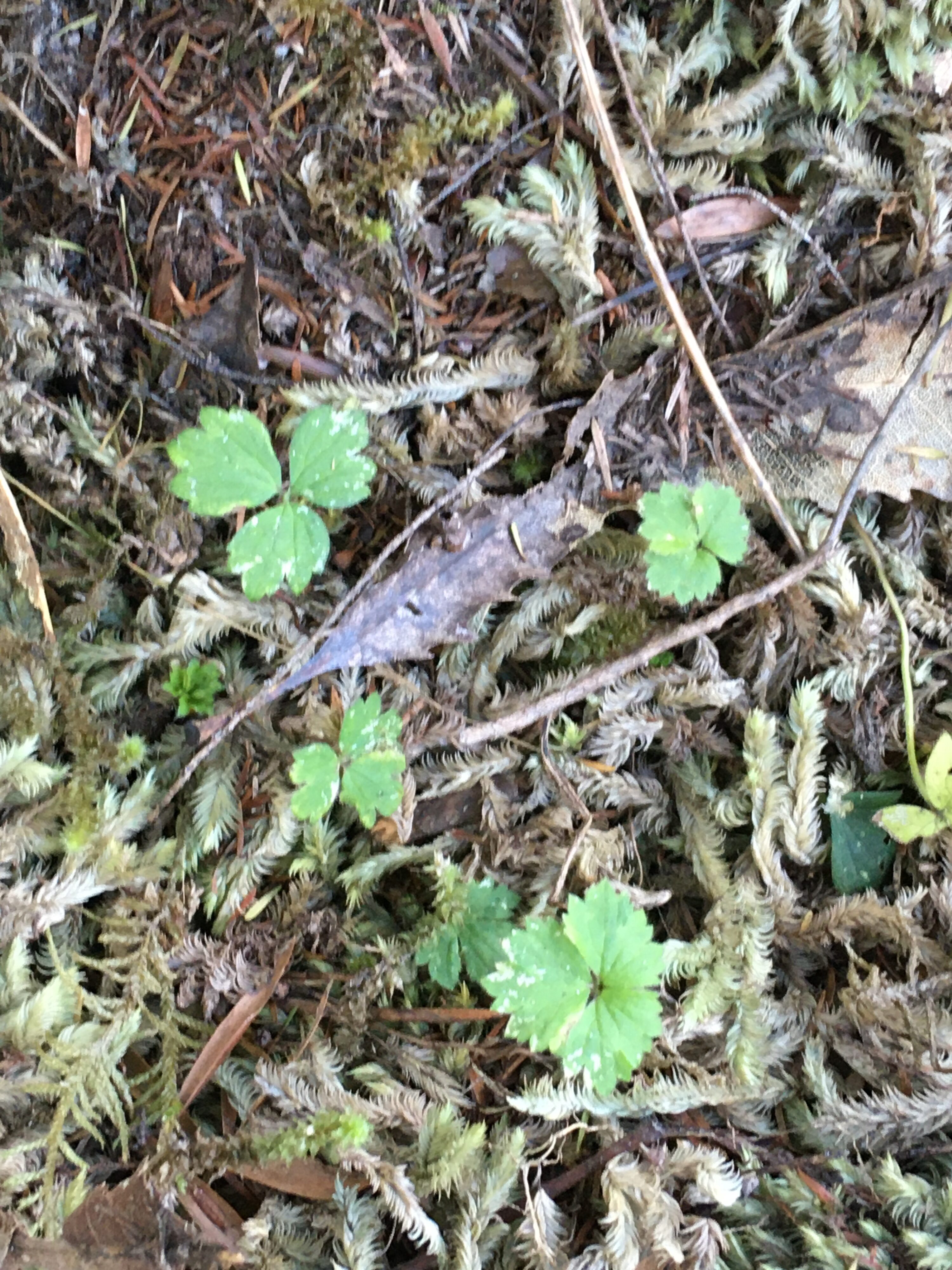
The big vine and shrub weeds and most of the tree weeds had been manually controlled in Cherry Bay in 2019, and wild revegetation was progressing well, but this particular part of it had little shade overhead, and gets very wet in winter, so it fills with Creeping buttercup and grasses every autumn.
The buttercups creep into the mossy clay and are weeded out by hand, and the “sea” of weeds around the “island” of native forest, so we keep the weeds down with a heavy mulch of dead wood, cherry and harakeke prunings, pine litter from under nearby pines, and any weeds that can be easily uprooted or cut down around it.

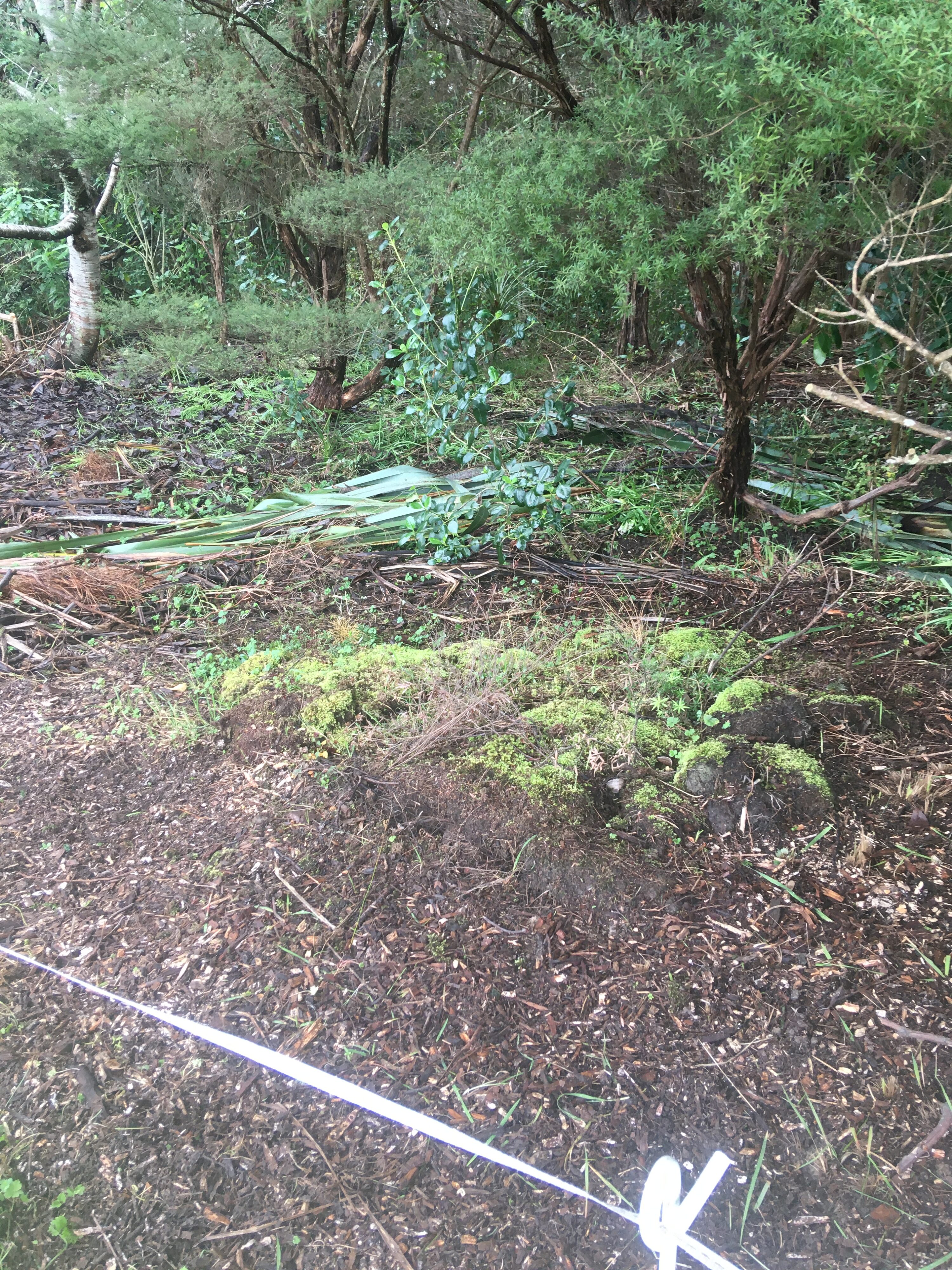
As expected, the larger tree seedlings growing in the clay pieces died not long after, but the native “milk moss” (Leucobryum javense) and many of the native tree and shrub seedlings are thriving, four years after translocation of their clay bed.
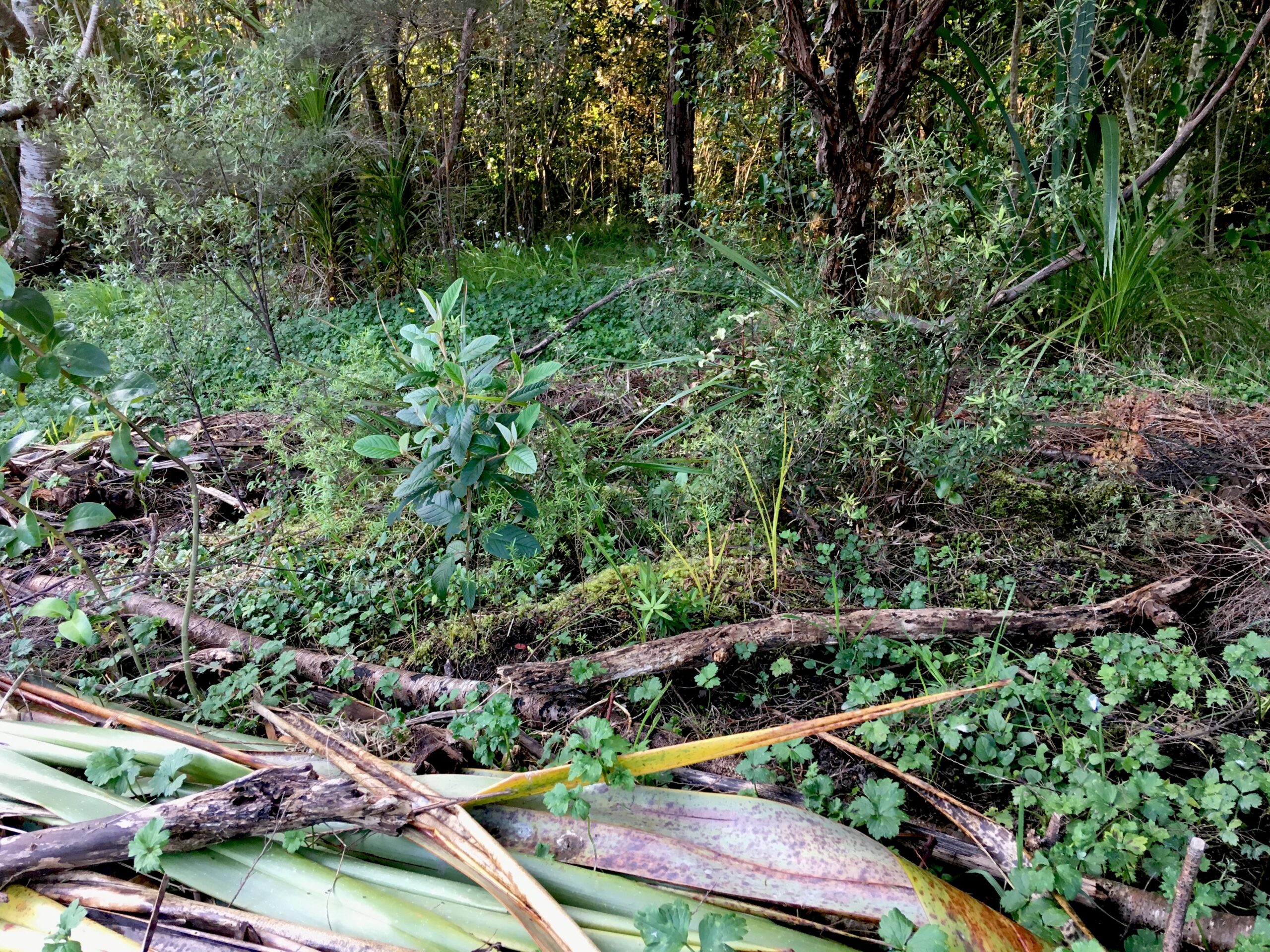
We are grateful to RAM Contracting for their understanding of and collaboration with the Gahnia Grove restoration project’s objectives, and their cheerful contribution of time and equipment in creating Moss Island.
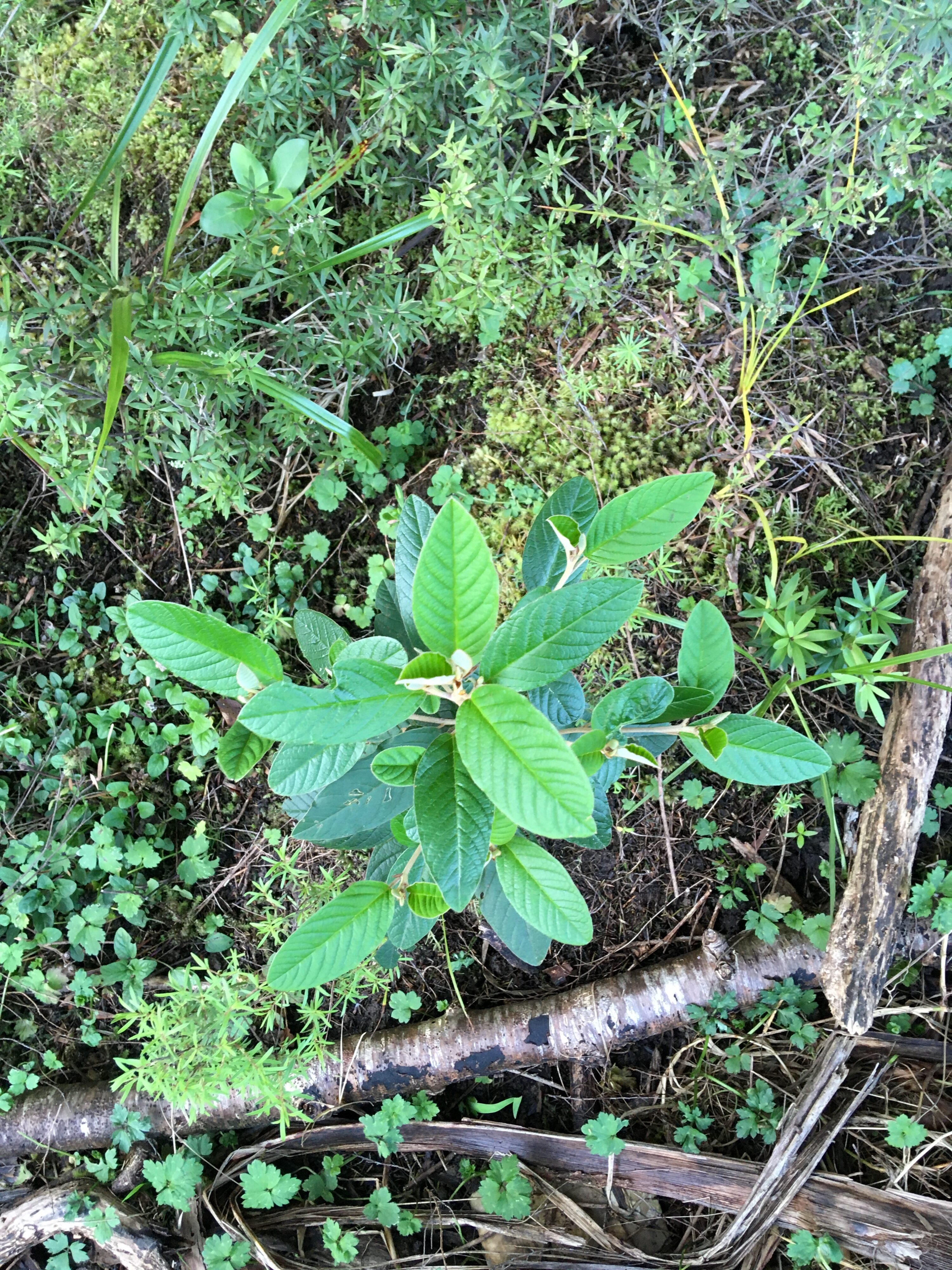
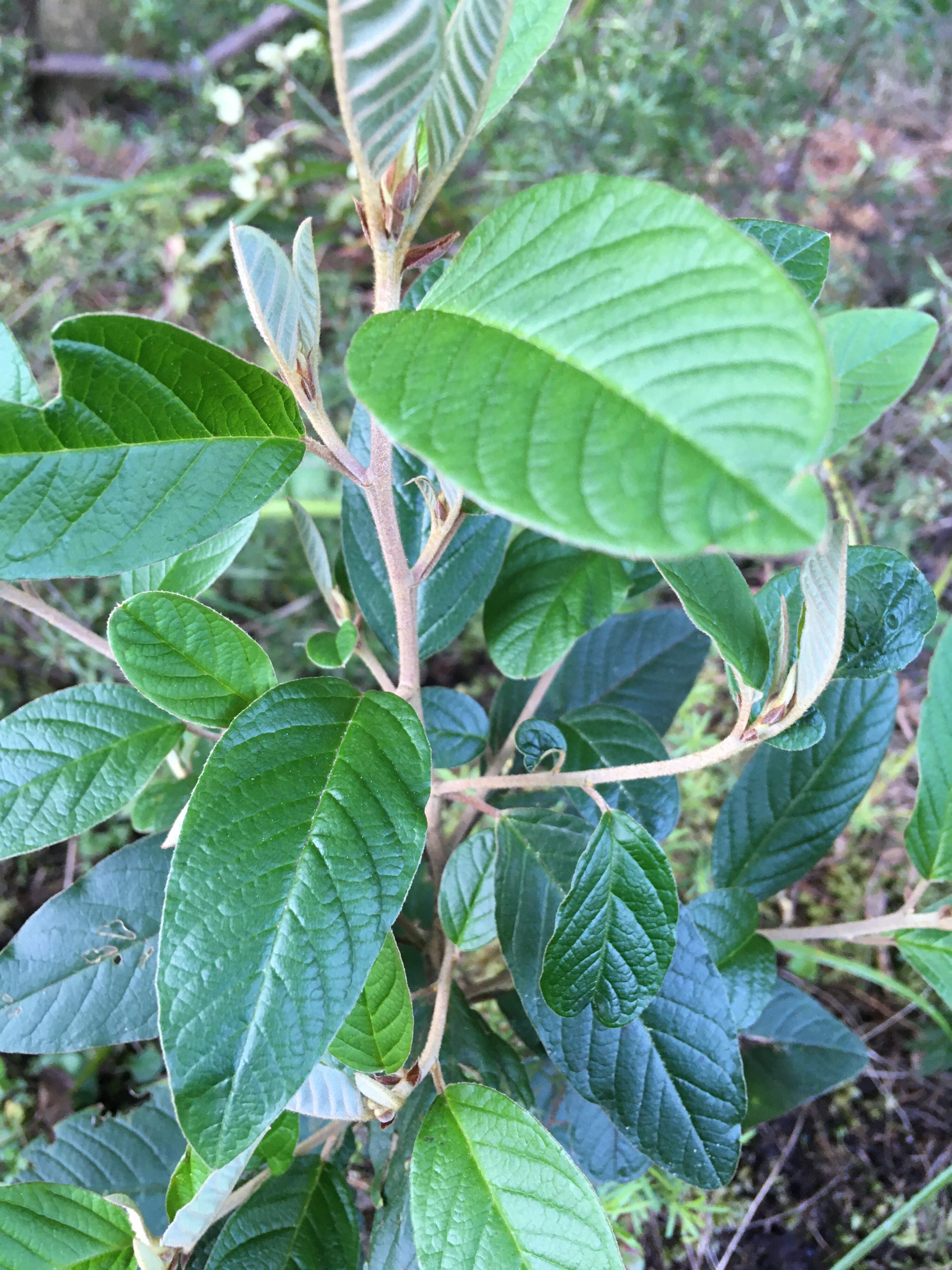
Thank you RAM Contracting!
